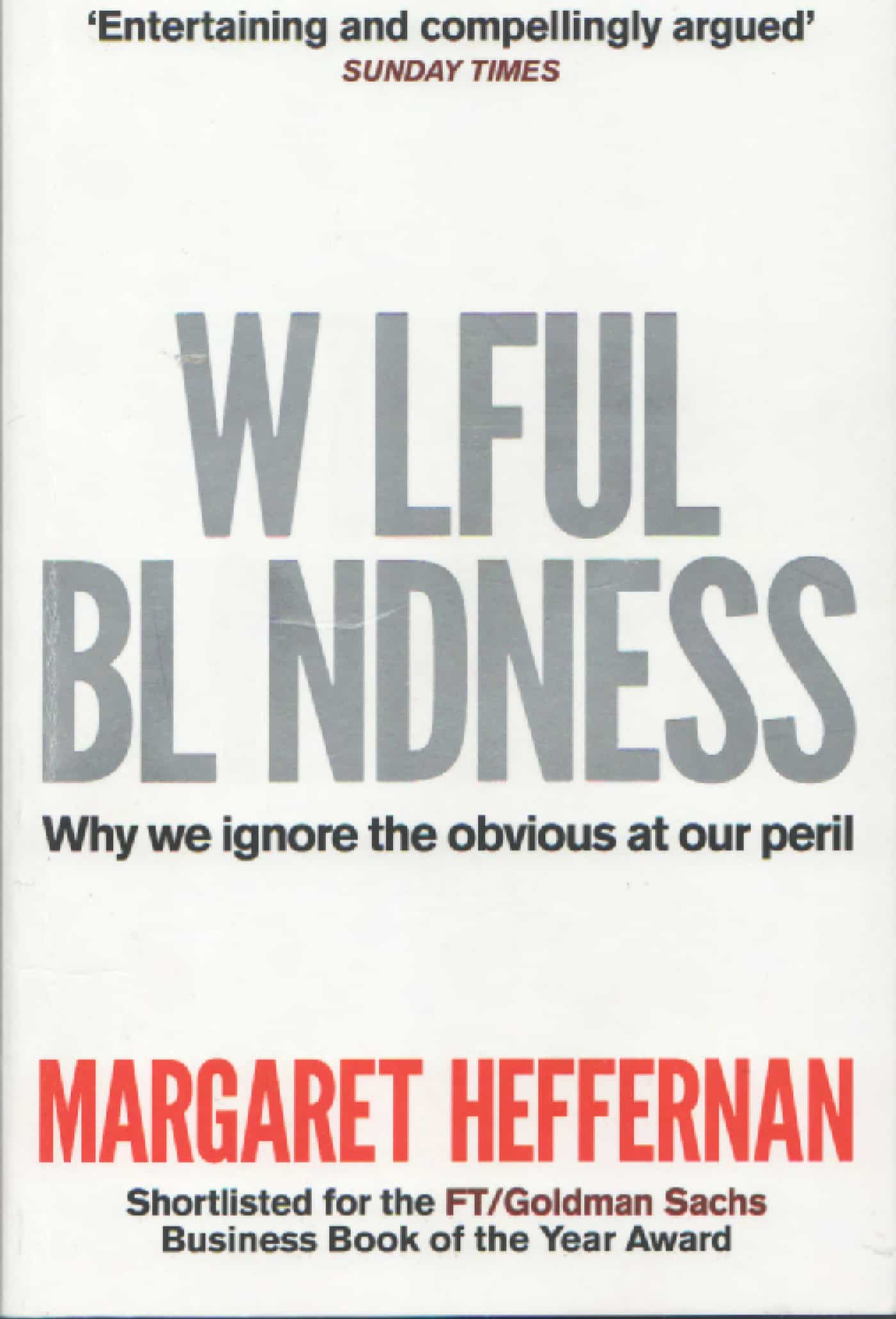Put your hand over your ears and start saying La La La La La La La. That is willful blindness (or, technically,deafness, but let’s not quibble).
 Margaret Heffernan, author of a new paperback edition of “Wilful Blindness – Why we ignore the obvious at our peril“, discovered wilful blindness while researching the trial of the Enron executives. Heffernan says that
Margaret Heffernan, author of a new paperback edition of “Wilful Blindness – Why we ignore the obvious at our peril“, discovered wilful blindness while researching the trial of the Enron executives. Heffernan says that
“Judge [Simeon] Lake was applying the legal principle of wilful blindness: you are responsible if you could have known, and should have known, something which instead you strove not to see.” (page 1)
Heffernan’s book is not simply a new book on business management. Heffernan acknowledges that wilful blindness is not limited to a workplace, person or management theory. She also says wilful blindness is not always a negative. It is this breadth of approach to the topic that increases the worthiness of her book. Continue reading “Through Wilful Blindness I begin to see”


